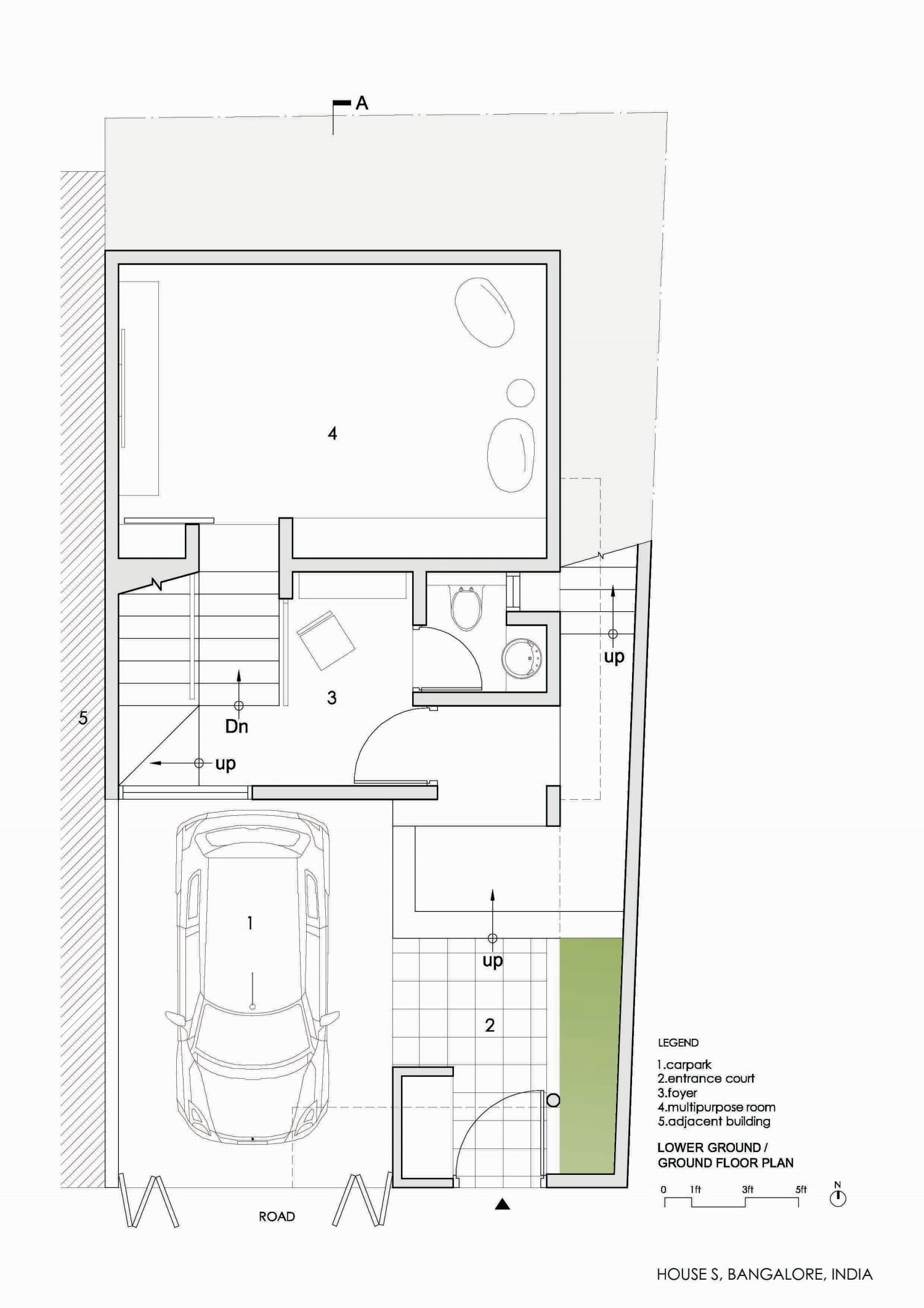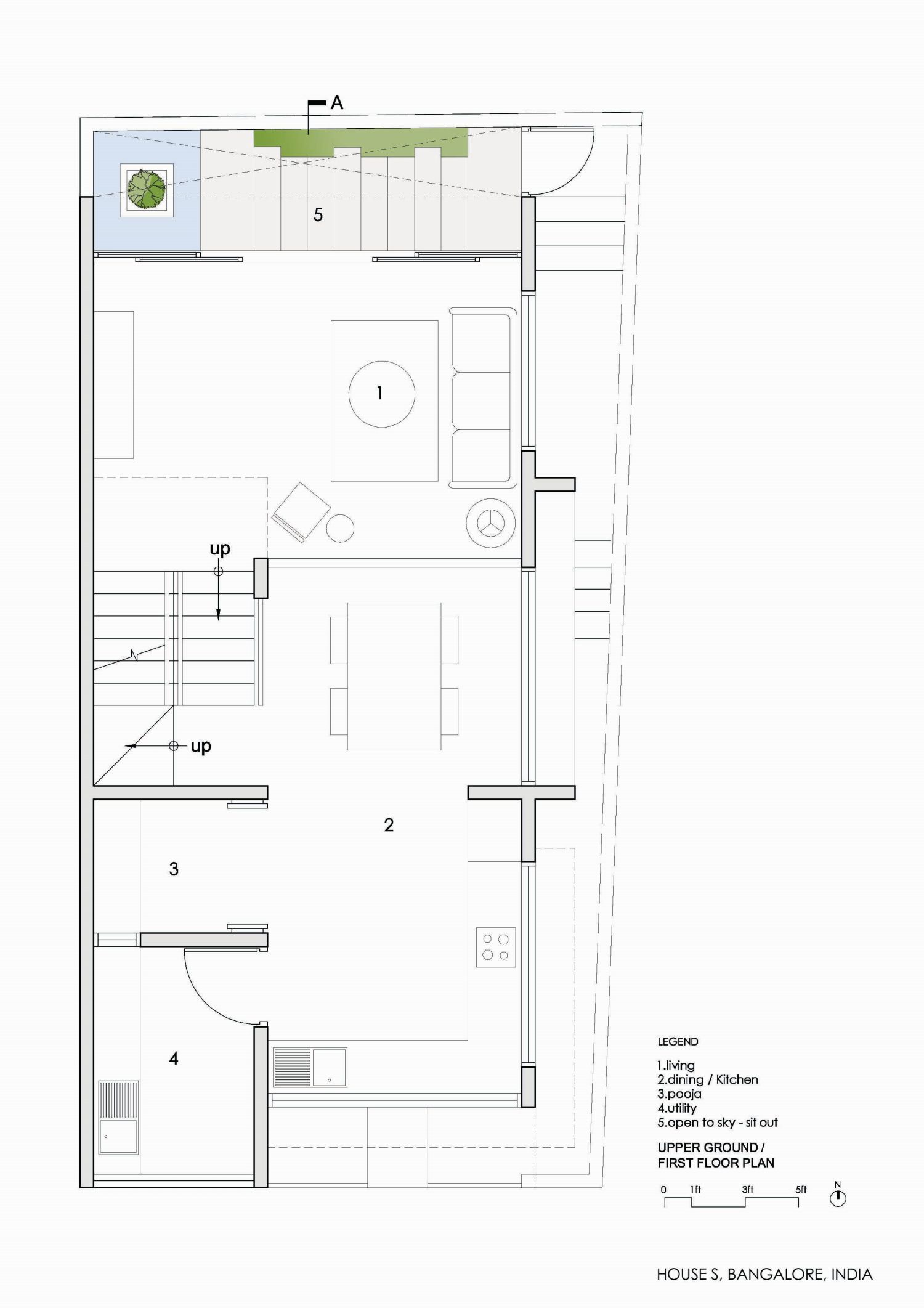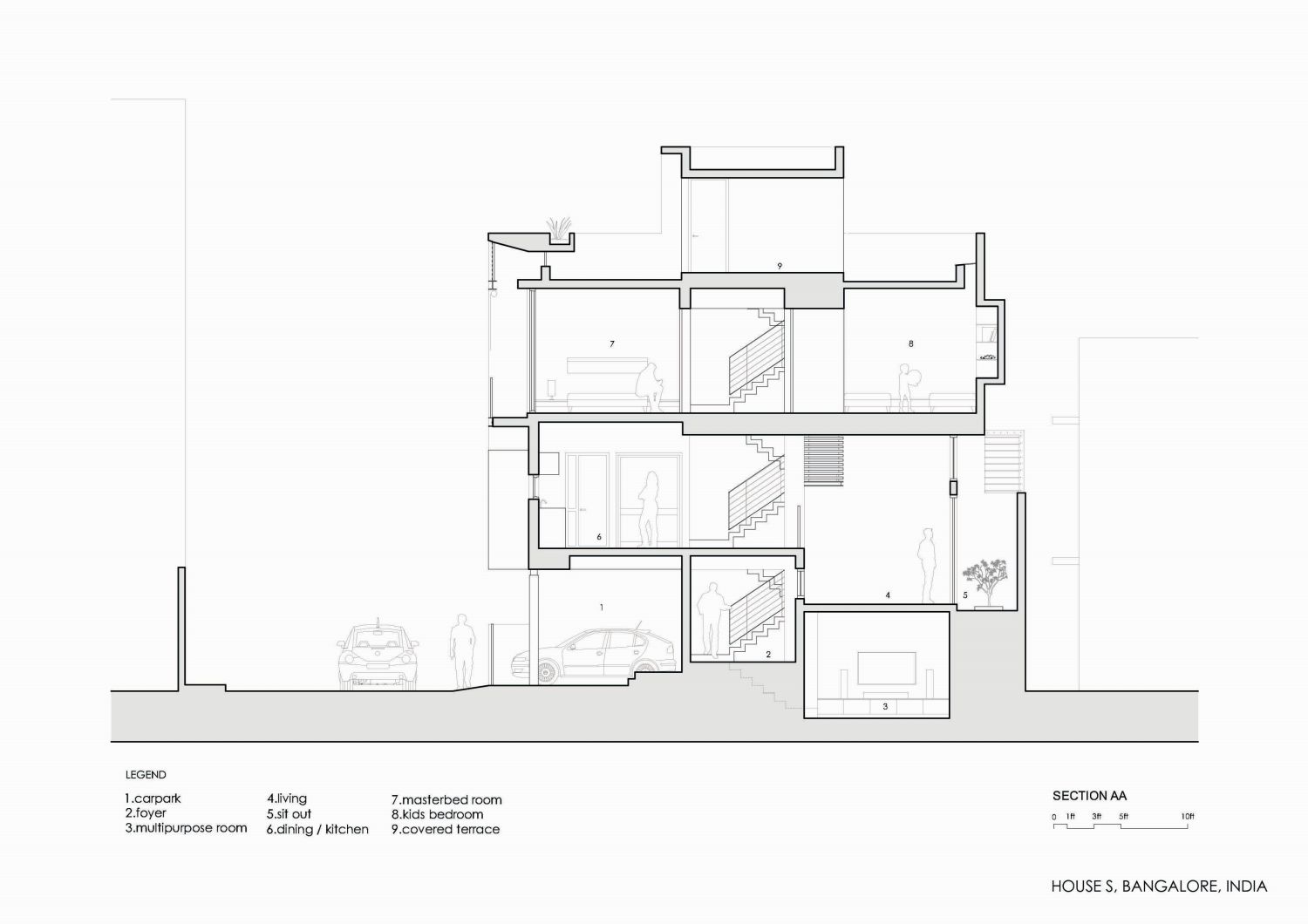
The house was designed on a small site of 20 ft x 40 ft for a working couple. The site was located in a densely populated residential locality, where most of the surrounding buildings either share walls or have little setback between them.
Keeping the shoestring budget and context in mind, the idea was to create an introverted building which could have enough light and openness to create a comfortable environment. To enhance this experience, the possibilities of creating different volumes inside the small area, by playing with the floor planes at different heights, were also explored.
Another important objective was to restrict the height of the building to match the surrounding fabric and introduce skylights to get the natural light deep into the shell of the building.
The house was divided into three zones vertically- the private (second floor), public (first and upper ground) and semi-public (ground and lower ground).
The private zone was designed to consist of two bedrooms positioned on either end of the building, divided by the central bay of bathrooms inserted between the rooms. The master bedroom faced the road with a large standout and the children’s bedroom was pushed to the rear end. Skylights on the roof ensured privacy and keep the interiors filled with light all the time, giving the end user flexibility to keep windows closed at times, due to the close proximity of neighbouring buildings.
A Living room with a high ceiling spilling out into an open-to-sky courtyard at the rear side of the property blurred the boundaries between the inside and outside of the house. The dining and kitchen were planned on a split level besides the living room, forming a single public zone connected visually to the landscape in the courtyard.
Taking advantage of the space created by the split levels, a foyer was inserted, the car park was planned below the kitchen and a partially sunk multipurpose room below the living area
The house was set back from the edge of the property on three sides, with the rear being the deepest. The Left side of the building shares a common wall with the neighbouring property. A service core consisting of the staircase and secondary rooms like the pooja/utility were positioned on this side, to keep external walls free, for creating punctures. A secondary staircase was introduced in the setbacks on the right side connecting the entrance court to the living area.
The choice of materials for the inside of the house was restricted to neutral tones of white-coloured walls, grey colour of the exposed concrete ceiling/staircase and a small portion of polished wood on slats and railing trims, to bring warmth to the whole pallet.
The only elevation facing the road was formed by white-coloured horizontal and vertical bands on the edges, with a sizable area of the exposed concrete surface having minimal fenestration. All the elements on the external skin were tied together with steel members and wooden slats creating a simple façade, compared to the very loud and colourful surroundings.
Drawings







Project Facts
Location: Bangalore, India
Project type: Architecture – Residential
Area: 1800 sft / 170 sqm
















